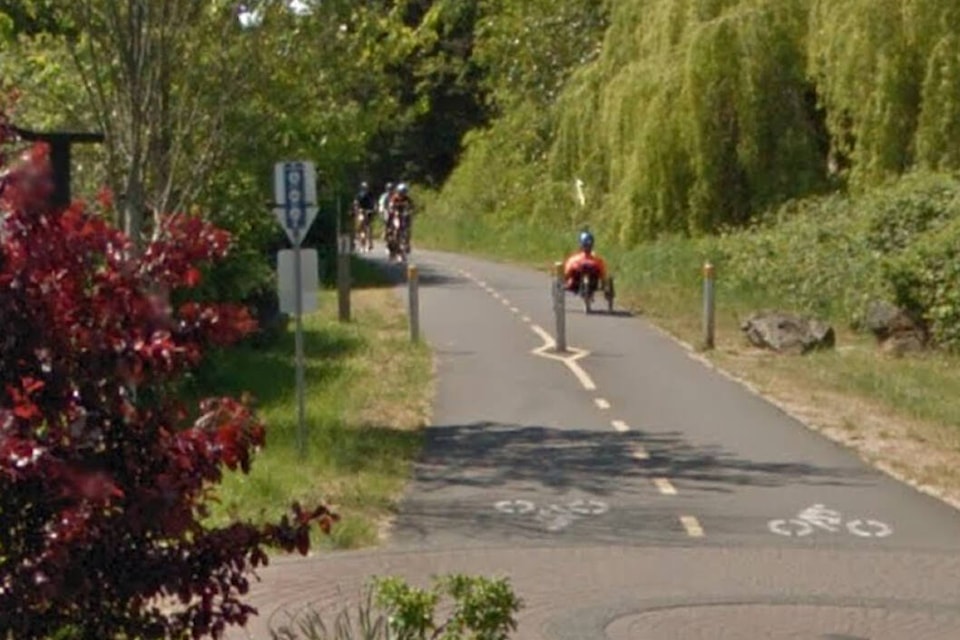Judy Brownoff is still haunted by the stories heard in 2017 when she asked cyclists what impact bollards on trails had on them.
At the time, the Saanich councillor was looking to learn more about the stiff concrete or metal poles that aim to keep vehicle traffic of pathways. She emailed cycling groups and heard back from about 25 riders with stories of broken limbs and destroyed bicycles.
“They were all horrific injuries,” she told the Saanich News.
More than six years later, it’s a cause now under the purview of Saanich Coun. Teale Phelps-Bondaroff, who floated the unanimously supported motion on Jan. 8 to have council plead with the Capital Regional District to remove the bollards on regional trails.
RELATED: Saanich council looks to put the brakes on bollards
Though Saanich asked in 2017, there was no real response, he noted. In the intervening years, provincial guidelines have changed and now recommend against the solid bollards when possible. Despite no firm policy, the District of Saanich also veers away from using the solid posts when possible, opting instead for flexible options, he said.
“The bollard is there to deal with the hypothetical possibility of a vehicle entering the trail, but it presents a real and tangible impact and risk to trail users,” Phelps Bondaroff said.
Aside from hiding in low visibility in dusk and darkness, trail users have also changed, he noted. Paths are busier and include an expanded range of people on bikes including those with trailers, multi-person and cargo. He specifically noted the Cycling Without Age Society and the non-profit’s bulky trishaw bikes that offer bicycle rides to people with reduced mobility.
READ ALSO: Confused driver wanders into Victoria bike lanes, struggles to escape
Daily summer volumes on the trail sections set for the work reached over 3,750 users in July 2022 and the number is rising faster than previously expected. It was projected a few years ago that trail users would reach 4,500 a day by 2040, but the CRD said that amount could soon be exceeded.
Mayor Dean Murdock, will essentially pen a letter to himself as the CRD transportation committee chair.
Where council asks the CRD to look at removing bollards in conjunction with its $53 million regional trail widening and lighting project approved in summer 2023.
The project already includes widening the Galloping Goose and Lochside trails into separated pedestrian and cycling routes, along with adding better lighting.
READ ALSO: CRD rolls out expedited, $53M regional trail widening timeline
The CRD opted for an accelerated option with $50 million secured through debt in order to complete the work over six years instead of two decades. The CRD will repay the borrowed funds over 15 years, with the costs in the coming years translating into $28 annually for the average household.
The letter asks the CRD to remove the rigid bollards on the regional trails and retrofit in accordance with B.C.’s Active Transportation Design Guide.
As there remains a dearth of data on collisions with bollards, Brownoff and Phelps Bondaroff noted, Saanich will also ask the CRD to consider tracking that information as well.
